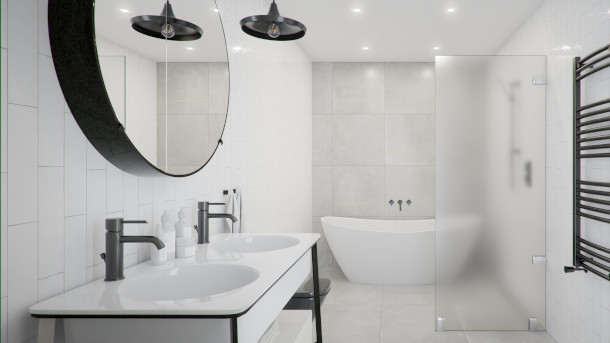LuxCoreRender 2.2 ships

An image rendered using a pre-release build of LuxCoreRender 2.2 and the BlendLuxCore 2.2 plugin, created by ArchVizBlender. The update makes the open-source renderer compatible with Blender 2.80.
The LuxCoreRender team has released version 2.2 of the open-source physically based renderer, adding a new GI cache system and a Disney BRDF material, and integrating Open Image Denoise.
BlendLuxCore, the Blender integration plugin for the renderer, now supports Blender 2.80, and work has begun on supporting all of the materials, lights and camera settings from Blender’s Cycles renderer.
A hybrid CPU/GPU unbiased render engine, formerly known as LuxRender
Formerly known as LuxRender, LuxCoreRender was rebooted last summer with a change of name, a new project website, forum and online documentation.
It’s a physically based render engine with a range of production features and, as of LuxCoreRender 2.0, supports hybrid C++/OpenCL rendering on CPUs and GPUs.
The 2.0 release also reduced the number of DCC tools into which the renderer is integrated: whereas LuxRender used to have plugins for a range of apps, LuxCoreRender only supports Blender.
New in 2.2: PhotonGI Cache system for faster global illumination
One key change in LuxCoreRender is the new PhotonGI Cache for caching global illumination.
Described as a “V-Ray-like solution”, but based on photon mapping rather than the approach taken in V-Ray’s Light Cache GI engine, it is intended to provide a fast, accurate approximation of brute force GI.
The solution consists of separate caches for direct lighting, indirect lighting and caustics, which can be be enabled in different combinations to render fast but noisy animation previews, or noise-free final images.
The caustics cache is described as rendering caustic effects “nearly for free” with path tracing.
Support for the Disney principled shading model and Open Image Denoise
Other new features in the core renderer include a Disney BRDF material, based on the Disney principled shading model, now widely adopted in DCC applications, including Blender itself.
The update also integrates Open Image Denoise (OIDN), Intel’s AI-based CPU render denoising system, due to be integrated natively in Blender in the upcoming Blender 2.81.
It is also now possible to set the transparency of the front and back faces of an object independently, which can be used to make objects in a scene ‘invisible’ to certain lights, as discussed in this forum post.
Other changes include new Power, Less Than, Greater Than, Dot Product, Position and Shading Normal textures, and new Albedo and Average Shading Normal AOVs.
You can find a list of new features via the link below, plus a list of bugfixes in the online release notes.
New in BlendLuxCore 2.2: compatibility with Blender 2.80, basic support for Cycles nodes
The major change in BlendLuxCore 2.2 is support for Blender 2.80, the milestone update to the software that shipped this July, after several years in public alpha and beta.
Previous releases of BlendLuxCore only supported Blender 2.79b, the previous stable release.
In addition, work has begun on the Cycles scene reader, a development project to make the materials, lights and camera settings from Blender’s native Cycles renderer compatible with LuxCoreRender.
In BlendLuxCore 2.2, that means support for “basic Cycles node set-ups”, although Cycles’ hair, volume and subsurface scattering shaders are not currently compatible.
Other changes include support for OIDN-based denoising of the Blender viewport, plus “small quality of life improvement”. Again, you can find a list via the link below.
System requirements and availability
LuxCoreRender 2.2 is available under an Apache 2.0 licence. Binaries are available for Windows and Linux; at the time of posting, the latest version available for macOS was still LuxCoreRender 2.1.
BlendLuxCore 2.2 is compatible with Blender 2.79b and 2.80.
Read a full list of new features in LuxCoreRender 2.2 on the LuxCoreRender forum
